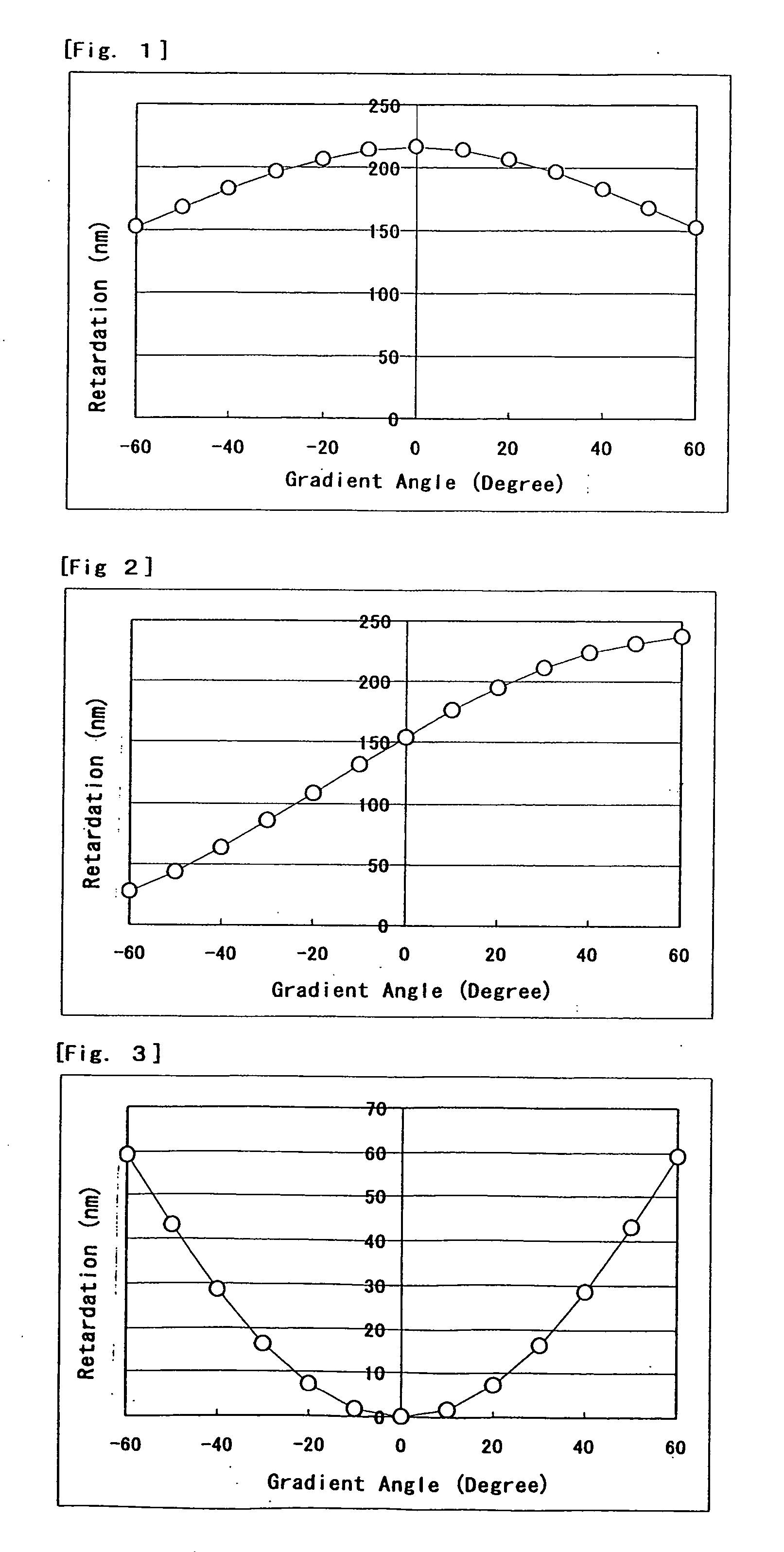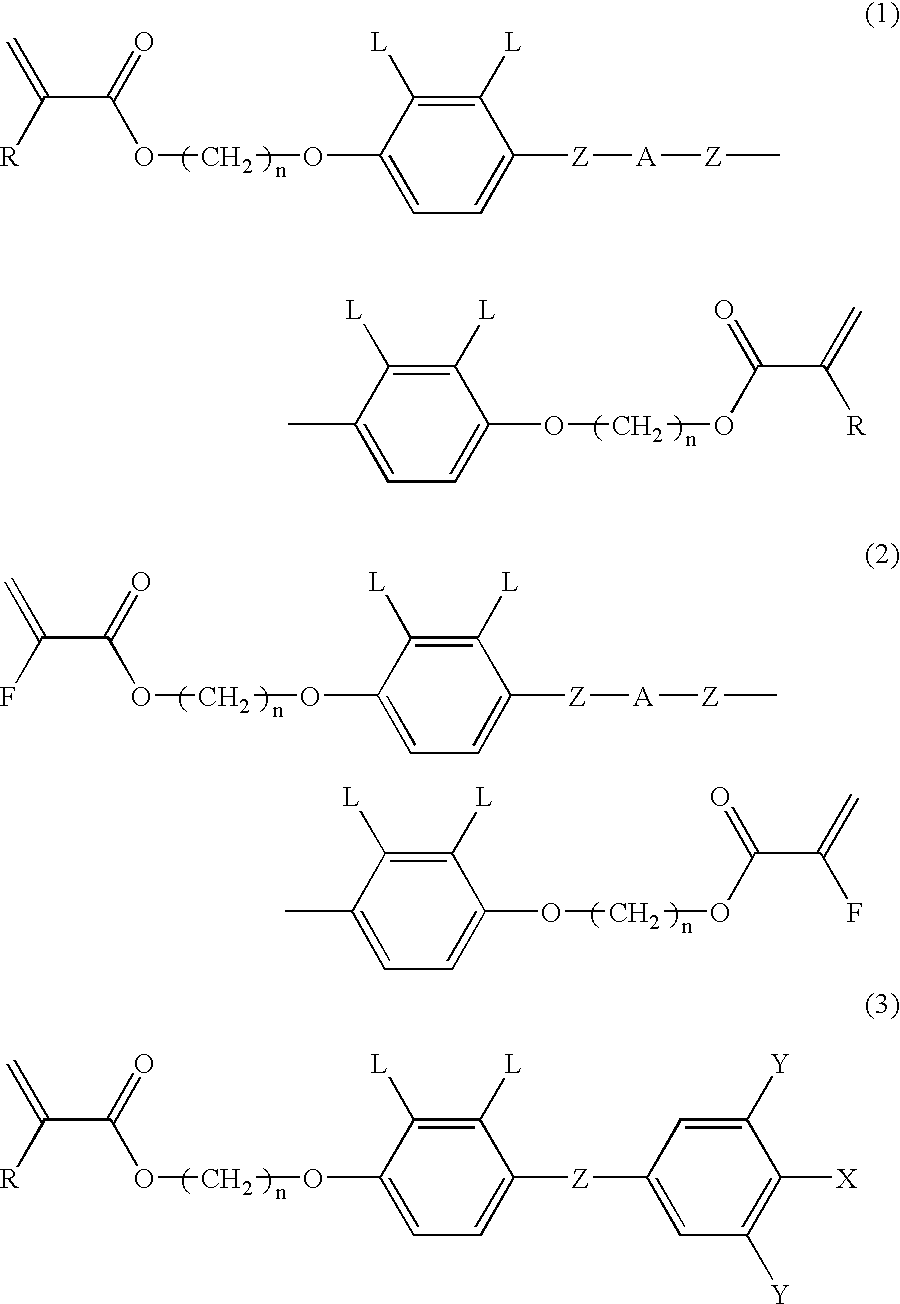Polymerizable liquid crystal composition containing fluorine-substituted (meth) acrylate derivatives
a technology of methacrylate and liquid crystal composition, which is applied in the field of composition, can solve the problems that one polymerizable compound may not fulfill satisfactory functions, and achieve the effects of large optical anisotropy, large heat resistance, and large weatherability
- Summary
- Abstract
- Description
- Claims
- Application Information
AI Technical Summary
Benefits of technology
Problems solved by technology
Method used
Image
Examples
example 1
Preparation of the Polymer Film (1)
[0064] Added to a mixture of the following three components was a polymerization initiator, Irgacure 907 (manufactured by Ciba Specialty Chemicals Inc.) of 3% by weight based on the above mixture. Toluene was further added to the mixture to prepare the composition (1) of a solution of 25% by weight.
[0065] A supporting plate was a TCA film treated with saponification that was rubbed with a rayon cloth (YA-18R manufactured by Yoshikawa Chemical Co., Ltd.). The composition (1) was coated on the supporting plate and heated. The resulting paint film was transparent at room temperature for 3 minutes and had a nematic phase. Next, the paint film was irradiated with a UV ray to give the polymer film (1). This film had even homogeneous orientation. Results obtained by measuring retardation of the film are shown in FIG. 1.
example 2
Preparation of the Polymer Film (2)
[0066] Added to a mixture of the following three components was the polymerization initiator, Irgacure 907 (manufactured by Ciba Specialty Chemicals Inc.) of 3% by weight based on the above mixture. Toluene was further added to the mixture to prepare the composition (2) of a solution of 25% by weight.
[0067] A supporting plate was a TAC film treated with saponification that was rubbed by a rayon cloth (YA-18R manufactured by Yoshikawa Chemical Co., Ltd.). The composition (2) was coated on the above supporting plate and heated. The resulting paint film was transparent at room temperature for 3 minutes and had a nematic phase. Next, the paint film was irradiated with a UV ray to obtain a polymer film (2). This film had even tilted orientation. Results obtained by measuring retardation of the above film are shown in FIG. 2.
example 3
Preparation of the Polymer Film (3)
[0068] Alkoxysilane (α-1) of 10% by weight based on the whole weight of the three components was added to the composition (1) prepared in Example 1 to give the composition (3).
[0069] A supporting plate was a TAC film treated with saponification that was not rubbed. The composition (3) was coated on the supporting plate and heated. The resulting paint film was transparent at room temperature for 3 minutes and had a nematic phase. Next, the paint film was irradiated with a UV ray to give the polymer film (3). This film had even homeotropic orientation. Results obtained by measuring retardation of the film are shown in FIG. 3.
PUM
 Login to View More
Login to View More Abstract
Description
Claims
Application Information
 Login to View More
Login to View More - R&D
- Intellectual Property
- Life Sciences
- Materials
- Tech Scout
- Unparalleled Data Quality
- Higher Quality Content
- 60% Fewer Hallucinations
Browse by: Latest US Patents, China's latest patents, Technical Efficacy Thesaurus, Application Domain, Technology Topic, Popular Technical Reports.
© 2025 PatSnap. All rights reserved.Legal|Privacy policy|Modern Slavery Act Transparency Statement|Sitemap|About US| Contact US: help@patsnap.com



